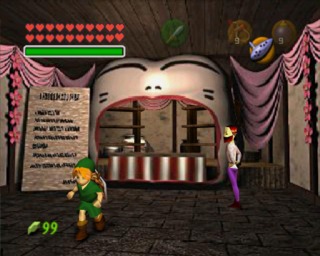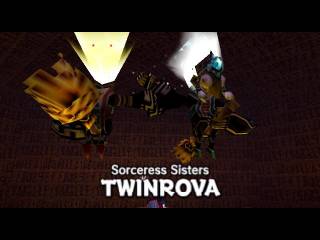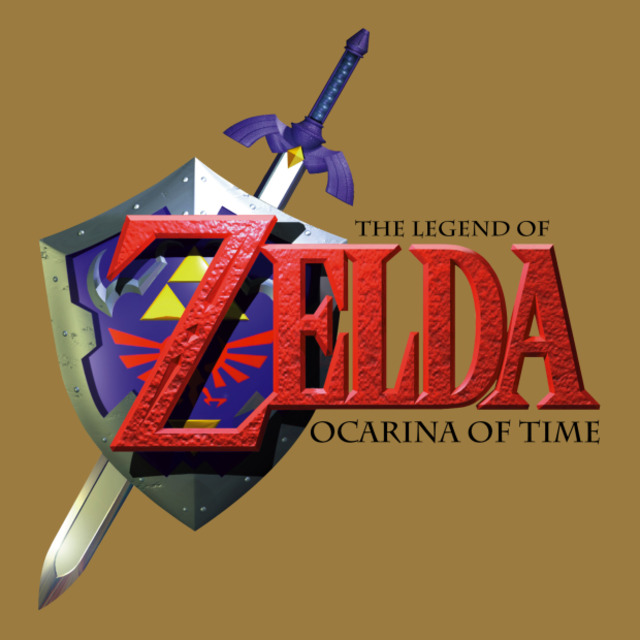A highly well-executed transition into the third dimension.
The jump to the third dimension is always a risky move for a traditionally 2D series. Obviously, the addition of another dimension will drastically change how a series operates, sometimes changing it entirely. In fact, many series received heavy criticisms for their first attempts at 3D ( Sonic, Castlevania, Mega Man, etc.). The Legend of Zelda, fortunately, has avoided this fate with Ocarina of Time, its first foray into the third dimension. Although it’s not perfect, Ocarina of Time manages to capture what made previous Zelda titles so satisfying in the first place.
Obviously, this addition of another dimension adds a lot to the game, and the story makes this clear by changing a lot of Zelda traditions. Yet this is not clear from the beginning; just like past Zelda games, Ocarina of Time begins with Link receiving a call to arms against a great evil. This call to arms entails collecting a small amount of magical trinkets to stop said evil. However, Ocarina of Time also contains many serious changes to the Zelda formula. Both Link and Zelda start off as children, Ganondorf is a human, the traditional overworld theme is nowhere to be found (even though tracks from the previous game abound), and most of all, the story places a larger emphasis on atmosphere than ever before. Characters are not afraid to explain the mythos of Hyrule whenever possible, but it never feels forced or irrelevant to what is happening in the storyline. Overall, the game does an excellent job of making you feel like a hero from a medieval epic.

Contrasting with these plot holes is the world design, which comes across as incredibly refined and replete with side quests and secrets. Navigating the world is easy to do, as warps connect all major areas as early as the first area of the game. These warps are necessary, as Ocarina of Time will lead you to all corners of the map as soon as it possibly can. However, very rarely is the direction of the game hard to ascertain. Through Navi and Saria, it does a great job of leading you into its ten dungeons spread across a large world. This does not include the myriad sidequests and secrets to be found in Hyrule. Just about every area holds some type of upgrade or sidequest to be completed. Even the dungeons contain their own distractions in the form of Gold Skulltulas to be killed. The only exception to these rules seems to be the fields connecting these areas. While there are things to do in Hyrule Field, it can still feel very empty sometimes, making travel through it somewhat boring. This is less a problem in the second half of the game, where travel is made far easier, but it still remains present.

Better yet, most equipment serves a secondary function in a very robust combat system. Just like in dungeons, every item not only serves a useful purpose, but receives much use over the course of the game. It is not uncommon to switch from one weapon to another mid-battle to defeat an enemy. Surprisingly, even non-combat items like bottles can be used in fights. Part of what makes the combat outstanding is just how it controls. Manually aiming at enemies is easy to perform, and because of the targeting system, it is even easier to strafe, shoot, toss bombs, etc. Unfortunately, the swordplay, a major part of the game, does not fare as well. In theory, everything works fine; enemies show some effort in blocking your slashes, placing a greater emphasis on strafing and striking at just the right time. In fact, performing all these actions is just as easy as performing all others. The biggest flaw, though, is that most enemies die easily either to a jump slash or a slash to their underside. This becomes a particularly major problem in certain boss battles, where three jump slashes is enough to finish them. Fortunately, the other weapons, as stated previously, compensate for this, making the system enjoyable overall.
The result of all of this is an incredibly strong, well executed game. Almost everything in the game demonstrates a satisfying amount of polish, from the elaborate world/dungeon design to the varied combat system. The only crippling flaws seem to relate to the story, although it is not without its merit. Besides, this is not enough to reduce the quality of the game by a significant amount, making it clear why so many people still enjoy Ocarina of Time.

3 Comments